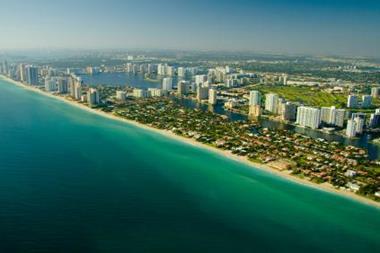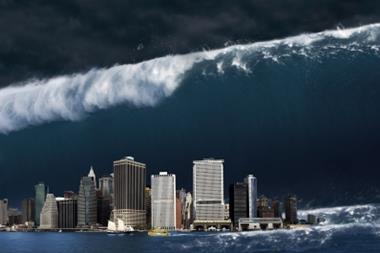A country’s entire population cannot live in a few select locations that are not vulnerable to natural disasters, but good precautions can make any place more resilient. By Robert Morelli
Mesa, Arizona, and Milwaukee, Wisconsin, though very different cities located in very different climate zones, have at least one thing in common. They were found to be the least vulnerable large US cities to natural disasters in a 2006 study conducted by SustainLane.com, an online social media company, and Risk Management Solutions (RMS), the risk modeling company. The research also identified Cleveland, Ohio, El Paso, Texas, and Phoenix and Tucson in Arizona as cities that appear more cushioned than most from natural disasters, such as hurricanes, earthquakes, floods, hailstorms and tornadoes. By contrast, Miami, New Orleans, Oakland, California, San Francisco and Honolulu were among the cities most at risk to suffer from a natural disaster.
Certainly, a country’s entire population cannot live in a few select locations because they are less vulnerable to natural disasters. In reality, communities thrive in all climates. In fact, many settlements were built around natural landscape features because of their benefits. Despite their chance of being flooded, cities grew up around rivers, and farm communities developed on the flat Midwestern plains, despite the likelihood of tornadoes. Populations along the east coast from Florida to Maine continue to increase, despite the potential for hurricanes to strike during almost half of the year.
However, communities have suffered significant property damage, destruction and large financial losses in the wake of natural disasters. Hurricane Katrina’s losses are well documented and other recent natural catastrophes have carried significantly high price tags, too. California wildfires resulted in at least $1 billion of property damage in the autumn of 2007, including the loss of some 1,500 homes.
In February this year, more than 90 tornados plowed through Mississippi, Arkansas, Tennessee, Kentucky and Alabama in a two day period, killing 55 and leaving behind hundreds of millions of dollars in property losses. Communities have learned many hard lessons about the impacts of a natural disaster, resulting in a better understanding of how to minimise future damage and withstand nature’s harshest forces.
Foresight
Planning is the cornerstone of effective risk management. For new construction projects, especially important infrastructure elements such as hospitals and utilities, plans start with finding the best and safest location possible. Therefore, hospitals are not likely to have ocean views and schools are not built at the base of volcanoes. Choice locations, however, are not always available. Construction still occurs in flood-prone places. To limit potential property damage, precautions should be incorporated into the construction plans. Buildings should be appropriately elevated so that the lowest finished floor is above the 100 year flood level, and buildings should be made as watertight as possible. Construction can be adapted to the location and its associated risks.
Building codes, the set of rules that detail minimum acceptable levels of safety, were originally developed to prevent or reduce the loss of life and property due to fire. As structural knowledge improved, so did the codes. Since many buildings pre-date the latest, most comprehensive codes, additional steps may be necessary to minimise risks if they do not meet current standards.
During California’s Northridge earthquake in 1994, for example, many vital community buildings and highways that were previously considered earthquake-resistant did not live up to expectations. While school buildings survived quite well, 11 area hospitals suffered structural damage, and some were unusable after the earthquake. Findings of investigations after the event resulted in major structural improvements and changes in building codes, including recommended retrofits to existing construction.
In many communities, homeowners and businesses have found ways to reduce the vulnerability of structures to natural hazards. In the case of protecting a building from high winds caused by tropical storms, hurricanes, and gust fronts, the risk management focus is on sustaining the reliability of the building, including roofs and windows, and designing or reinforcing a structure by:
• Ensuring that roof coverings meet the appropriate standard for wind resistance and that they are properly secured and free of damage.
• Directing roof drain discharge away from the foundation.
• Keeping roof drains clear of debris to prevent build-up or pooling of water.
• Installing impact-resistant windows and doors as needed.
• Properly anchoring carports, canopies and overhangs.
• Installing an exterior lightning protection system (lightning rods).
• Installing surge protectors on all computer systems, telephone lines and other electronic systems to protect against damage from the lightning that often accompanies windstorms.
No matter where the community is, the threats of severe weather and other acts of nature have to be considered. Surviving the full force of nature is much easier if a detailed disaster recovery plan is in place before any potential catastrophe becomes reality. Though infrequent, tornadoes, hurricanes and earthquakes are headline-grabbing events. The Northridge earthquake and the devastating 2005 hurricanes, Katrina, Rita and Wilma, have prompted many businesses and communities to take an aggressive stance in preparedness and business continuity planning. It is equally important to consider other naturally occurring events and look for ways to minimise the potential risk for property damage.
Heavy snowfall and freezing temperatures
In the winter of 2008, Madison, Wisconsin broke its record for annual snowfall with an accumulated 194.6cm (76.6 inches), a half-inch more than the all time snowfall record set in 1978-79. Cold weather and snow can bring more than slippery roads and high heating bills; they can have other repercussions. It is estimated that approximately 3,000 roofs collapse each year in the United States as a result of heavy snowfall. This year, a Spokane, Washington, firehouse joined the statistics as its roof collapsed under the weight of heavy snow.
Heavy snowfall, especially when mixed with ice or hail, can be devastating for any roof that is not strong enough to support the extra load. Likewise, after a snowstorm, rising temperatures may create ponds of melted snow on roofs, which pose a significant collapse risk. Even worse, if the temperature drops again, this water could freeze, and the resulting ice dams that form on roof edges or near drains could hinder proper drainage. Critical transmission and distribution lines, electrical, telecommunications, cable, can also be damaged.
To prevent such occurrences, in areas of severe weather, it is important to:
• Reinforce existing roofs where the roof design cannot withstand the anticipated snow load.
• Have trained snow removal teams and appropriate snow removal equipment at sites where the loss expectancy is not high or where reinforcement is not practical.
• Design new roofs to withstand the anticipated snow load and with sufficient drainage.
• Install insulation around the water or sprinkler supply piping located in exterior walls, unheated drop ceilings or other unheated spaces to prevent freezing or the possibility of pipes bursting.
• Run transmission and distribution lines below ground wherever possible.
Landslides, mudslides, avalanches
A record snowfall means that a lot of snow must melt. Where does it all go? What happens to it? In some cases, ground saturation from melting snow or continuously heavy rain can lead to landslides or mudslides. Mudslides have been so severe in some parts of the country that whole houses have been washed away. More commonly, they cause the closure and/or damage of roadways, bridges and tunnels.
Communities and property owners can implement a variety of techniques to reduce landslide and mudslide risks, including constructing channels, drainage systems, retention structures and deflection walls. Similarly, planting groundcover, reinforcing the soil and avoiding cut and fill building sites can help reduce the risks.
Wildfires
Wildfires can happen anywhere. California was devastated by October’s wildfires in 2007 and other states are not immune to this risk. In February, Virginia Governor Timothy Kaine declared a state of emergency after high winds knocked down power lines and sparked some 400 fires that burned 6,000 acres and resulted in the evacuation of tens of thousands of Virginians. Military practice exercises in May 2007 set off a series of fires in New Jersey’s pinelands, resulting in the destruction of many homes and the evacuation of thousands of people.
Especially as residential developments expand into wild land areas, people and property are increasingly at risk from wildfire. While fire is a natural process in any wild land area and serves an important purpose, it is difficult to see its value when witnessing the destruction of property. Risk management recommendations to minimise or prevent damage include:
• Establish a cleared safety zone of at least 9m (30 feet) and 31m (100 feet) in pine forests) between structures and combustible vegetation.
• Use fire-resistant ground cover, shrubs and trees for landscaping;
• Use only fire-resistant or non-combustible materials on roofs and exterior surfaces.
• Regularly clean out roofs and gutters.
• Equip chimneys with spark arrestors.
• Cover vents, louvers and other openings with wire mesh to prevent embers and flaming debris from entering structures.
• Avoiding overhangs, eaves, porches and balconies that can trap heat and burning embers.
• Installing double or triple-pane thermal glass, fire-resistant shutters or drapes, and noncombustible awnings to protect against radiant heat.
Natural disasters underscore the need for communities and businesses to prepare diligently for any event that could disrupt services for their residents or customers. With an ongoing effort, communities can plan and implement appropriate changes to help them better withstand the forces of nature.
Postscript
Robert Morelli is a senior account consultant and a regional practice group leader in the property group of the XL Insurance companies.
Robert.Morelli@xlgroup.com
www.xlinsurance.com.




















No comments yet